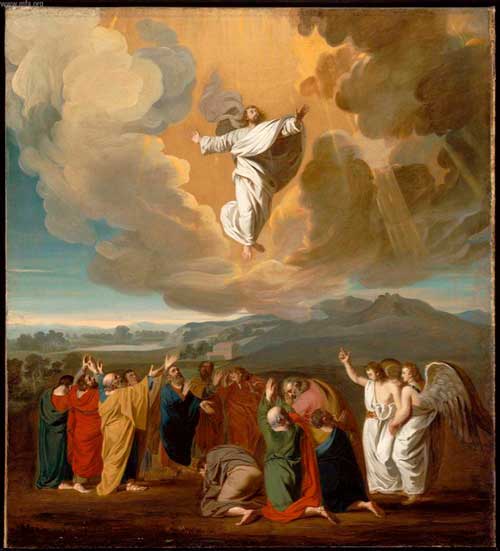The Ascension has always been a challenge to understand through the scriptures. Artists have played a role in giving us a visual depiction of the event. They have been doing this for over a 1000 years.
By the 6th century the iconography of the Ascension had been established and by the 9th century Ascension scenes were being depicted on domes of churches.
There are many traditions in Ascension art.
In some representations there may be no mountain and he may be climbing a mandorla, or be lifted towards Heaven in a mandorla by angels.
In the Eastern Church and in some western paintings, the Virgin Mary is at the center of the group of Apostles (representing the Church) who look upwards towards the ascending Christ.
In Romanesque depictions sometimes just the feet of Christ are shown as he disappears up into the clouds; this depiction became the most popular in Northern Europe, where it lingered in provincial wood reliefs until well after the Reformation.
Ascension scenes fall naturally into two zones, an upper heavenly part and a lower earthly part. The ascending Christ may be carrying a resurrection banner or make a sign of benediction with his right hand. The blessing gesture by Christ with his right hand is directed towards the earthly group below him and signifies that he is blessing the entire Church. In the left hand he may be holding a Gospel or a scroll, signifying teaching and preaching. From the Renaissance on the angels may not be present.
The earthly part of the Ascension depictions do not only represent those believed to have been present at the Ascension, but the entire Church. In some Ascension depictions both Apostle Paul and the Virgin Mary may be present. Given Paul converted to Christianity after the Ascension, and that the New Testament does not directly place the Virgin Mary at the Ascension, these depictions represent "the Church" rather than the specific individuals
More modern views often omit the disciples focusing on Jesus. The sky in many cases is not specifically shown and he is alone. One of the most radical is Dali’s horizontal Jesus. Another type of image is a three dimensional space emphasizing Christ’s movement, accompanied by brilliant colors.



